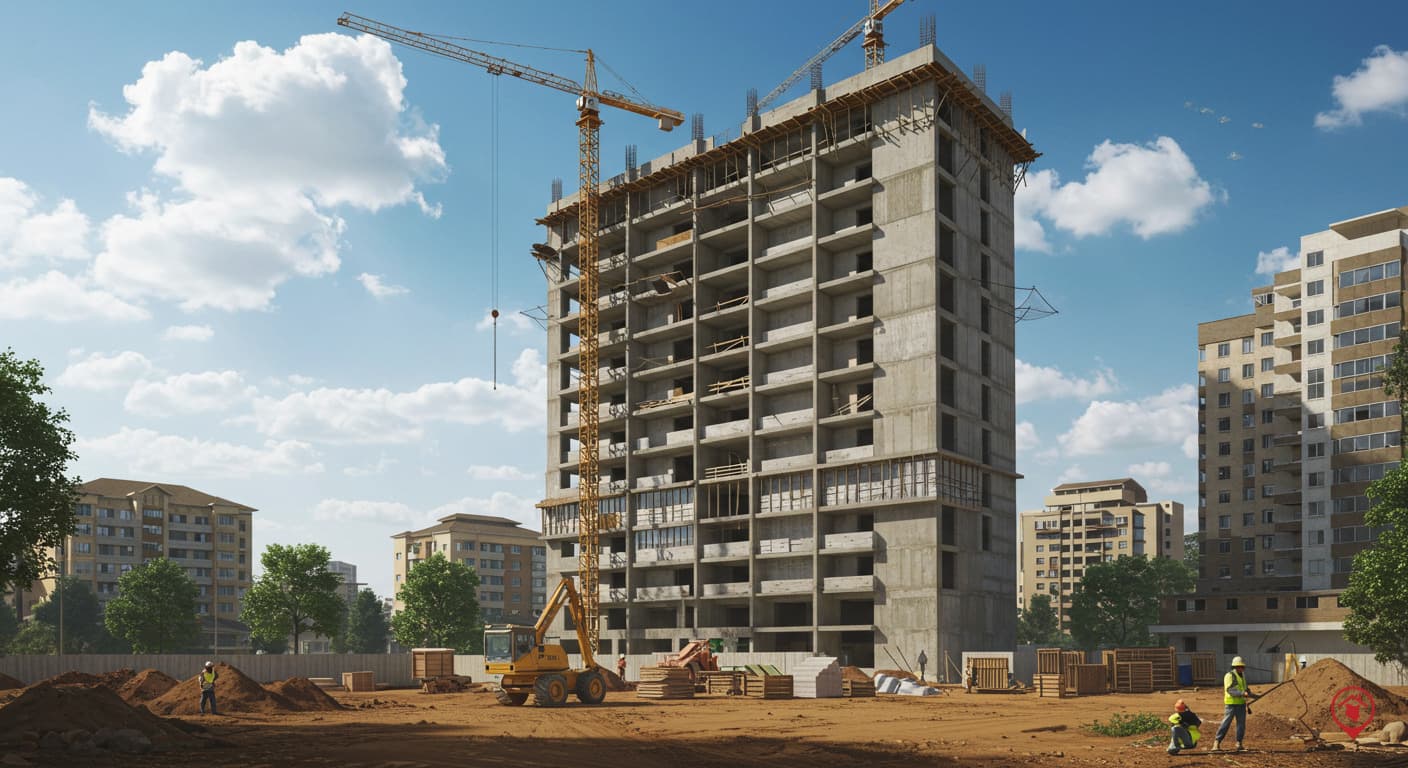Loading News Article...
We're loading the full news article for you. This includes the article content, images, author information, and related articles.
We're loading the full news article for you. This includes the article content, images, author information, and related articles.
Producers are increasingly targeting Kenya's white cement market, driven by a growing demand for aesthetic finishes in construction and a rebound in the broader building sector.

Kenya's white cement market is experiencing a surge in attention from producers, buoyed by a rising demand for aesthetically pleasing and durable construction materials. This increased focus is a direct response to evolving preferences in the country's construction sector, which is gradually recovering from recent contractions. White cement, primarily used for decorative purposes in architectural applications, offers a smooth, glossy finish and high durability, making it increasingly popular in high-end residential and commercial buildings.
Historically, grey cement has dominated the Kenyan construction landscape due to its cost-effectiveness and structural strength, particularly for large-scale projects. However, its aesthetic limitations often necessitate additional decorative products like primers, wall putty, and paint, which can escalate overall project costs in the long run. In contrast, white cement can be directly converted into textured paint by adding colour pigments, offering a more economical and efficient solution for achieving desired finishes.
The Kenyan government has implemented policies to support the growth of the white cement market, including subsidies on raw materials, tax incentives for manufacturers, and streamlined regulatory processes. These measures aim to promote local production and reduce reliance on imports, while also setting quality standards to meet international benchmarks.
Despite these supportive policies, the white cement market faces challenges, notably higher production costs compared to ordinary cement and fluctuations in raw material prices. Limited consumer awareness about the benefits of white cement also poses a hurdle.
The broader Kenyan construction industry has shown mixed signals. After contracting by 0.7 percent in 2024, down from a 3.0 percent growth in 2023, the sector recorded a 20.69 percent growth in cement consumption during the first three months of 2025. This double-digit growth marks the first such increase since 2022, signalling a potential recovery. Cement production also saw a significant increase, rising by 17.3 percent in the first half of 2025 to 4.85 million tonnes, up from 4.14 million tonnes in the same period of 2024. Consumption mirrored this surge, growing by 22.1 percent year-on-year to 4.76 million tonnes in the first half of 2025.
However, cement sales declined by 8 percent year-on-year to 8.47 million metric tonnes in 2024, the sharpest annual drop in over two decades, according to the Kenya National Bureau of Statistics (KNBS). This decline was attributed to budgetary cuts on public infrastructure projects and a general slowdown in construction activity.
Producers are keen to capitalise on the aesthetic advantages of white cement. For instance, JK White Cement is marketed for its high durability, gloss effect, and smoother wall finish, suitable for both interior and exterior applications. Other brands like Bamburi White Cement, Savannah White Cement, Blue Triangle White Cement, and Mombasa Cement's white cement are also prominent in the market, offering varying price points and qualities.
As of October 2025, a 50kg bag of ordinary cement in Kenya can cost between KSh 700 and KSh 1,200, while a 40kg bag of white cement can range from KSh 1,900 to KSh 2,700. Despite the higher initial cost, the long-term economic benefits of white cement, by reducing the need for multiple finishing layers, are becoming more apparent to developers.
While the demand for white cement is growing, the extent to which this will translate into significant local production capacity remains to be seen. Currently, some white cement is imported, and the impact of import levies on its pricing and availability is a point of ongoing discussion within the industry. The long-term effects of the government's affordable housing agenda on the demand for premium materials like white cement, given the focus on cost-effectiveness, also present an area of uncertainty.
The construction sector's recovery in the first half of 2025, with increased cement production and consumption, suggests a positive outlook for the broader building materials market. Industry players are expected to continue investing in new technologies and marketing strategies to enhance the appeal and accessibility of white cement. The government's continued support through policies and incentives will be crucial in fostering a robust local white cement industry.
Observers will be keenly watching for further data from the Kenya National Bureau of Statistics on cement production and consumption to ascertain the sustained recovery of the construction sector. The impact of new investments in clinker production, such as the proposed facility by Amsons Group in Kwale, on the overall cement market, including white cement, will also be a key area of interest. Additionally, the evolution of consumer preferences and the adoption of white cement in various construction segments will indicate the market's future trajectory.
Keep the conversation in one place—threads here stay linked to the story and in the forums.
Other hot threads
E-sports and Gaming Community in Kenya
Active 6 months ago
Popular Recreational Activities Across Counties
Active 6 months ago
The Role of Technology in Modern Agriculture (AgriTech)
Active 6 months ago
Investing in Youth Sports Development Programs
Active 6 months ago